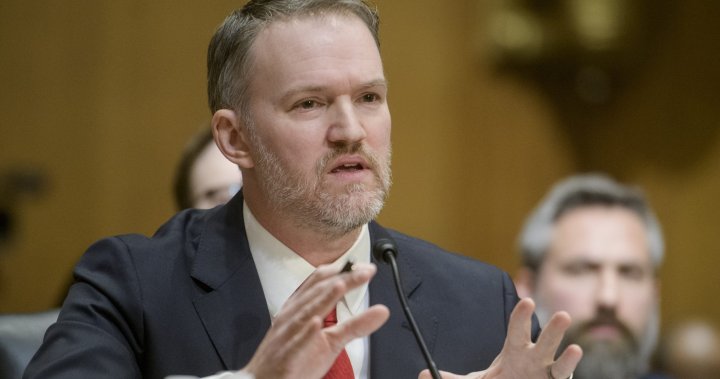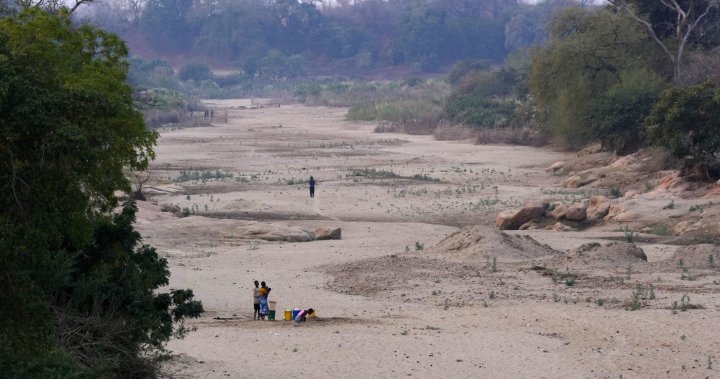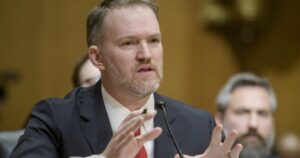The question these days is where will the huge sums of money needed to address climate change come from, especially for developing countries.
Getting governments to do more was a big focus at the UN climate conference that concluded this week, but as we saw from a wave of criticism over weak financing commitments, alternatives are needed too.
“There is not enough money from government sources,” Catherine McKenna, CEO of the Climate and Nature Solutions Foundation and a former federal environment minister, said in an interview.
To help narrow the gaping gap, there is a growing push to use so-called blended financing, which uses scarce public dollars to improve a project’s finances enough that it makes sense for the private sector to invest in it.
“We need to get creative to get the right incentives to make this happen,” McKenna said before countries agreed at the weekend to raise at least $300 billion a year by 2035.
Story continues below ad
This model is especially needed in developing countries, where the risks are higher and therefore the feasibility study is difficult to implement.
This helps explain why this large group of countries receives only about 15 cents of every dollar spent globally on clean energy.

What’s at stake at the COP29 global climate summit
To fill this gap, FinDev Canada announced a fully hybrid financing platform in time for the UN Climate Change Conference (COP29). In partnership with Mitsubishi Financial Group and supported by the Green Climate Fund investment, the platform has set a financing target of $1.5 billion to help up to 25 developing countries.
The fund will look to follow on from Canada’s previous smaller-scale efforts using blended finance, such as a partnership that helped launch green energy in Uzbekistan.
In 2020, Canada provided $17.5 million in financing at below-market rates, along with other organizations, to help get a $100 million solar project – the first in Uzbekistan – off the ground.
Story continues below ad
Once that hurdle was cleared, one of the co-investors helped implement a second solar project at more than twice the size, with fewer concessions. Soon after, the wind project moved forward without any reduced funding at all.

Get weekly money news
Get expert insights and Q&As on markets, housing, inflation and personal finance information delivered to you every Saturday.
Nnamdi Igbokwe, Director of Thought Leadership at Convergence, said the funding model aims to help realize those challenging early projects and pave the way for more projects in the future.
“This is why blended finance has become so important, because it is a mechanism that allows the private sector to be mobilized in a way that would have prevented it originally.”

The United Nations COP29 climate conference kicks off in Azerbaijan on Monday
Convergence, a Toronto-based group focused on increasing the use of blended finance, found that the model was used for $18.3 billion in climate finance last year, up from $8 billion the previous year.
Story continues below ad
More importantly, the total included six deals, each worth more than $1 billion.
“We are starting to see smarter and more efficient use of catalytic capital as billion-dollar deals become more consistent,” Igbokwe said.
This is important, Igbokwe said, because to get even a fraction of the global financing targets in the trillions, there needs to be a steady flow of multibillion-dollar deals.
But condensing the model is not easy at all.
Blended finance adds layers of complexity to financing deals. Public concessions come in a range of options, from lower interest rates to agreeing to be the first to bear any losses, all of which must be negotiated in addition to normal commercial terms.
The perception of risks associated with projects and countries also makes it difficult for many private banks to invest at all, because regulations limit the type of lending risks they can take.
There is also not enough data sharing on how past projects have performed, which could help change those risk perceptions, Igbokwe said.
Then there is the challenge of finding projects that are promising enough, and large enough, to invest in, but that do not meet the threshold for traditional financing.
Story continues below ad

COP29: What is at stake during the 2024 climate conference in Azerbaijan?
Trending now
-

The Vice President of the Philippines says she hired an assassin to kill the president if she is killed
-

3 Michigan deer hunters die of heart attacks within a 48-hour period
Overall, these obstacles have made the model’s growth much slower than the Convergence Center and others had hoped.
“It’s very complicated,” said Susan McGeachy, CEO of the Global Climate Finance Accelerator.
Part of the problem is that each deal is so customized that it’s difficult to apply terms to the next deal, so it’s slow, she said.
But it is still “very useful” to help bridge the financing gap, and if it were not difficult, blended financing would not be necessary.
“The whole point is to address that gap in the market. So, if it became consolidated, any of the solvent players should have exited and gone to something else that addresses a new gap in the market.”
She pointed out that it is not only useful abroad. There is also potential for Indigenous communities and climate projects at home, where Canada makes better use of publicly funded lenders like the Canada Infrastructure Bank.
Story continues below ad
For example, BMO has partnered with Public Bank to provide low-cost loans to retrofit office buildings to reduce emissions.
However, others are concerned about the emphasis on using private markets, and demand much greater direct lending to public projects from public banks.
“We have seen market-based mechanisms fail over and over again,” said Susan Spronk, an associate professor focusing on international development at the University of Ottawa.

Trade Matters: What is Canada’s role in the COP29 negotiations?
Spronk helped found a group that opposes the use of blended finance, concerned about the poor record of water privatization and other efforts to make profits for some of the world’s poorest people.
While renewable energy has a clearer business case, making profits from adaptation projects such as flood barriers and wildfire prevention is far from easy.
Story continues below ad
There is a growing focus on adaptation efforts, including the FinDev platform, which has a 70% stake, but Spronk worries that blended finance is not up to the task.
“It’s doomed to be a very expensive way to try to bring about a climate transition.”
The fund will help meet demand for blended finance and show others how to replicate the success, David Bamji, chief strategy officer at FinDev, said in a statement.
Many others, like McKenna, contend that there simply isn’t enough government funding, so it’s important to know how to make these private deals work, even in difficult circumstances.
“People are going to have to work hard to find solutions, to make sure the money doesn’t just go to easy places.”

















